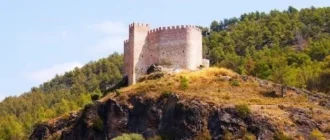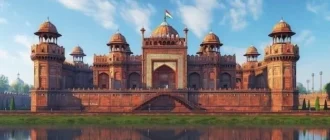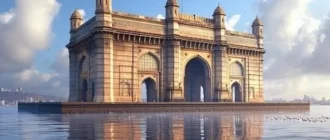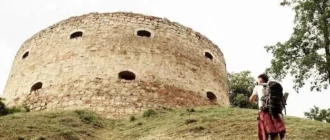Exploring Intramuros: A Journey Through Manila’s Walled City
Intramuros, Spanish for “within the walls,” is a historic enclave in Manila, Philippines. A UNESCO World Heritage Site contender, it boasts centuries-old churches, forts, and cobblestone streets, offering a captivating journey through time and a glimpse into the country’s rich colonial past.
A UNESCO World Heritage Site
While not yet inscribed as a UNESCO World Heritage Site, Intramuros has taken significant steps towards achieving this prestigious recognition. In a promising development for the Philippines’ cultural heritage, the “Colonial Urban Plan and Fortifications of Intramuros” was officially included in UNESCO’s Tentative List of World Heritage Sites in March 2024. This inclusion highlights the area’s outstanding universal value and its significance in representing a significant period in human history.
The Tentative List is a pre-requisite for any property to be considered for nomination as a World Heritage Site. It serves as an inventory of sites a country believes deserve this distinction and are committed to protecting. Inclusion on the list signifies that Intramuros possesses cultural and historical significance worthy of international recognition and that the Philippines is dedicated to its preservation.
Intramuros’ potential inscription as a World Heritage Site underscores its embodiment of a unique chapter in Philippine history. The site’s colonial urban plan and fortifications, largely influenced by Spanish colonial architecture and urban planning, showcase a fusion of European and Asian traditions, creating a distinctive cultural landscape. The inscription process involves rigorous evaluation based on specific criteria, including demonstrating outstanding universal value, authenticity, and integrity. Should Intramuros successfully meet these criteria, it would join the ranks of globally celebrated cultural treasures.
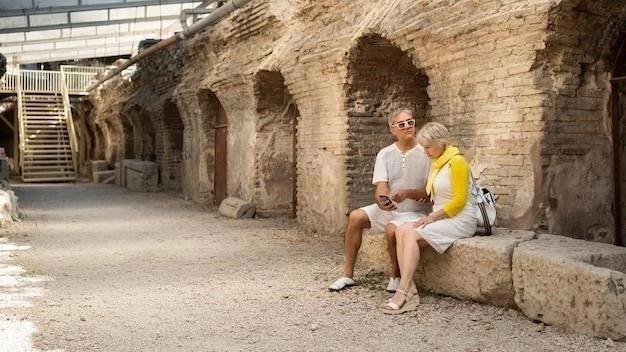
The Spanish Colonial Era: A Legacy in Stone
Intramuros stands as a testament to the profound influence of the Spanish colonial era on the Philippines, its enduring legacy etched in the very stone that forms its walls and structures. Established in the 16th century, Intramuros served as the heart of Spanish power and administration for over three centuries, leaving an indelible mark on the nation’s architectural landscape, cultural identity, and social fabric.
The walled city’s layout, characterized by grid-like streets and a central plaza, reflects the Spanish urban planning principles of the time. This design, influenced by Renaissance and Baroque aesthetics, aimed to create a sense of order and grandeur, showcasing the might of the Spanish empire. The imposing walls, fortifications, and strategically placed gates were not merely defensive measures but symbolic representations of Spanish dominion.
Within these fortified walls, magnificent churches, convents, and government buildings rose, embodying a fusion of European architectural styles with local craftsmanship. Intramuros became a crucible of cultural exchange, where Spanish colonial influence intertwined with indigenous traditions, resulting in a unique hybridity reflected in art, music, cuisine, and social customs. The legacy of this era, though complex and at times tumultuous, remains palpable in the very fabric of Philippine society. Intramuros stands as a poignant reminder of this historical period, inviting visitors to delve into a captivating narrative of conquest, faith, resilience, and cultural fusion.
Fort Santiago: Guardian of Intramuros
Standing watch over the Pasig River, Fort Santiago is more than just a fortress; it’s the historical heart of Intramuros, embodying centuries of Philippine struggles and triumphs. Constructed in the late 16th century, the fort replaced a wooden palisade that once protected the fledgling Spanish settlement from indigenous resistance. Its strategic location at the mouth of the river made it a crucial defense point, controlling access to Manila and its valuable trade routes.
Over the centuries, Fort Santiago bore witness to pivotal moments in Philippine history. It served as a military headquarters for Spanish conquistadors, a prison for political dissidents during various periods, and a symbol of oppression under Japanese occupation during World War II. Its dungeons and chambers hold somber tales of captivity, torture, and execution, bearing witness to the sacrifices of Filipino revolutionaries who fought for independence.
Today, Fort Santiago stands as a poignant reminder of the nation’s turbulent past. Preserved as a museum and national park, it allows visitors to trace the footsteps of history through its dungeons, battlements, and courtyards. Among its most moving features is the Rizal Shrine, dedicated to Philippine national hero José Rizal, who was imprisoned here before his execution in 1896. The shrine exhibits his writings and personal belongings, offering a glimpse into the life of a man who inspired a nation to fight for freedom.
San Agustin Church: A Testament to Time
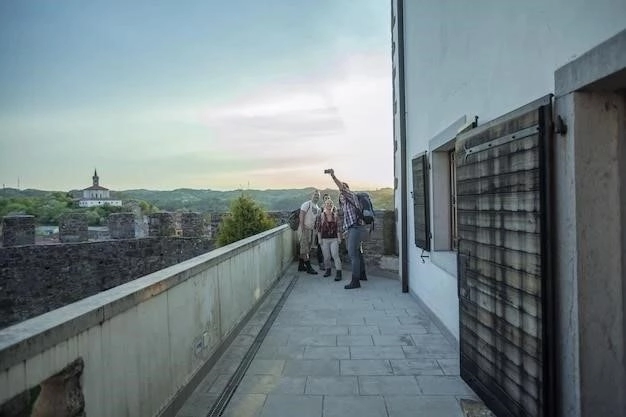
A beacon of enduring faith and architectural grandeur, San Agustin Church stands as a testament to the passage of time and the unwavering spirit of Intramuros. Designated a UNESCO World Heritage Site in 1993, the church is a remarkable survivor, having withstood earthquakes, fires, and wars that ravaged the walled city throughout its history.
Completed in 1607, San Agustin Church is the oldest stone church in the Philippines, its construction a testament to the skill of Filipino artisans working alongside Spanish architects. The church’s design, a fusion of Spanish Renaissance and Baroque influences, features a grand facade adorned with intricate carvings, massive granite columns, and a towering bell tower. The interior is equally awe-inspiring, with a vaulted ceiling adorned with trompe l’oeil paintings, an ornate retablo, and exquisite chandeliers.
Beyond its architectural splendor, San Agustin Church holds a profound historical and spiritual significance. It served as a sanctuary for Manileños during times of conflict, a place of worship for generations, and a repository of sacred art and relics. The church’s museum houses a collection of religious artifacts, vestments, and manuscripts, offering a glimpse into the rich history of Catholicism in the Philippines. A visit to San Agustin Church is a journey through centuries of faith, artistry, and resilience, a testament to the enduring power of the human spirit.
Casa Manila: A Glimpse into Colonial Life
For those seeking a tangible connection to Intramuros’ past, a visit to Casa Manila offers a captivating glimpse into the affluent lifestyle of the Spanish colonial era. Located within the walled city’s meticulously reconstructed historic quarter, Casa Manila is a museum meticulously designed to recreate the ambiance of a grand 19th-century Filipino home owned by a wealthy family during the latter part of Spanish rule.
Stepping inside Casa Manila is akin to stepping back in time. The house features a central courtyard, or patio, surrounded by airy rooms furnished with period furniture, artwork, and decorative objects. Visitors can wander through the elegant sala (living room), the grand dining room, the private chapel, and the bedrooms, each space adorned with meticulous detail. From the intricate capiz shell windows to the ornate furniture made from narra wood, every element evokes the opulence and grandeur of the era.
Casa Manila is more than just a collection of artifacts; it’s a portal to understanding the social hierarchy, cultural influences, and daily life of Intramuros during Spanish colonial times. It offers a glimpse into the lives of both the elite Spanish families and the Filipino artisans and servants who played integral roles in their households.
Cultural Events and Festivities
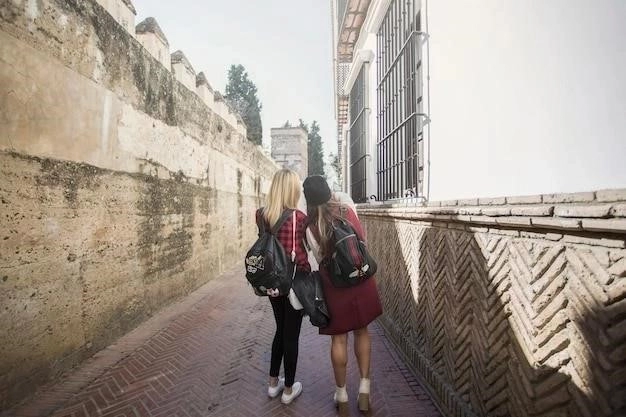
Intramuros transcends its historical significance, pulsating with a vibrant cultural scene that manifests in a captivating calendar of events and festivities throughout the year. These celebrations, deeply rooted in tradition and heritage, offer visitors a unique opportunity to experience the dynamism of Filipino culture against the backdrop of centuries-old architecture and storied streets.
One such cherished event is the annual Santacruzan sa Intramuros, a vibrant religious procession held in May. This colorful spectacle depicts the journey of Queen Helena, mother of Constantine the Great, in her search for the Holy Cross. Women adorned in elegant gowns, representing biblical figures and virtues, parade through the streets accompanied by music and devotees. The procession culminates in a grand celebration at the Manila Cathedral, showcasing the deep Catholic faith of the Filipino people.
Beyond religious festivities, Intramuros hosts a variety of cultural events throughout the year, from art exhibitions and theatrical performances to historical reenactments and culinary festivals. These events not only showcase traditional Filipino art forms but also provide a platform for contemporary artists and performers to share their talents. Whether attending a traditional dance performance, witnessing a dramatic retelling of a historical event, or indulging in local delicacies at a food festival, visitors are immersed in a vibrant cultural tapestry that celebrates the past while embracing the present.
Intramuros Today: A Blend of Old and New
Intramuros, once a picture of Spanish colonial grandeur, now thrives as a dynamic blend of the old and the new. While its cobblestone streets and centuries-old structures whisper tales of a bygone era, a vibrant contemporary energy courses through its veins. Today, Intramuros is not a static relic but a living, evolving space where history intersects with modernity in captivating ways.
Beyond the restored heritage sites and museums, a new generation of businesses and initiatives has taken root, breathing fresh life into the Walled City. Trendy cafes and restaurants stand alongside traditional eateries, offering innovative twists on Filipino cuisine. Art galleries and craft shops showcase the works of contemporary Filipino artists, infusing the historical setting with a modern artistic sensibility. Boutique hotels and restored ancestral homes offer unique accommodation options, allowing visitors to immerse themselves in the historic ambiance while enjoying modern comforts.
Intramuros’ transformation extends beyond its physical spaces. The Intramuros Administration actively promotes the area as a hub for cultural events, educational tours, and recreational activities, attracting a diverse crowd of locals and tourists. From heritage walks and bamboo bike tours to open-air concerts and film screenings, there’s always something happening within the Walled City’s historic walls. This dynamic interplay between preservation and progress ensures that Intramuros remains a vital part of Manila’s cultural fabric, a place where history is not merely preserved but celebrated and reimagined for a new generation.
Exploring the Walled City: Walking Tours and Kalesa Rides
Navigating the enchanting labyrinthine streets of Intramuros is an experience best savored at a leisurely pace, allowing its historical echoes to wash over you. Whether you choose to wander on foot or embark on a charming kalesa ride, the Walled City reveals its secrets slowly, inviting exploration and contemplation.
Numerous walking tours, led by knowledgeable guides, offer themed explorations of Intramuros’ historical treasures. Delve into the city’s Spanish colonial past, retracing the steps of conquistadors and revolutionaries, or embark on a spiritual journey through its centuries-old churches and religious sites. Photography enthusiasts can capture the interplay of light and shadow on ancient walls, while architecture buffs can marvel at the intricate details of colonial-era buildings.
For a more romantic and nostalgic experience, a ride on a kalesa is a must. These horse-drawn carriages, a vestige of old Manila, offer a leisurely way to absorb the sights and sounds of Intramuros. The rhythmic clip-clop of horse hooves on cobblestone streets, the gentle breeze carrying the scent of tropical flowers, and the panoramic views of historic landmarks create an ambiance that transports visitors back in time. Whether you choose a guided walking tour or a charming kalesa ride, exploring Intramuros at a leisurely pace allows for a deeper appreciation of its historical significance and architectural splendor.
Must-Try Culinary Experiences
A journey through Intramuros extends beyond its historical and architectural marvels; it also presents an opportunity to savor the rich tapestry of Filipino cuisine, infused with centuries of cultural influences. Within the Walled City’s restored buildings and charming side streets, an array of dining experiences awaits, from traditional Filipino eateries to modern culinary havens.
For a taste of authentic Filipino flavors, seek out restaurants serving time-honored dishes like adobo, a savory stew marinated in vinegar, soy sauce, and spices; sinigang, a sour and savory soup often made with tamarind; and kare-kare, a peanut-based stew with oxtail and vegetables. These dishes, rich in history and tradition, offer a delectable introduction to the diverse flavors of Filipino cuisine.
Intramuros also boasts a burgeoning culinary scene that caters to contemporary palates. Trendy cafes serve artisanal coffee and pastries, while modern Filipino restaurants offer innovative takes on classic dishes, incorporating international flavors and modern culinary techniques. Whether seeking a taste of history or a contemporary culinary adventure, Intramuros provides a feast for the senses, complementing its historical and cultural attractions with a delectable array of dining experiences.

Shopping for Souvenirs and Local Crafts
A stroll through Intramuros’ cobblestone streets presents a delightful opportunity to discover unique souvenirs and handcrafted treasures, each piece imbued with Filipino artistry and cultural significance. From traditional crafts passed down through generations to contemporary designs reflecting a modern aesthetic, the Walled City offers a diverse shopping experience for discerning travelers.
For those seeking authentic Filipino handicrafts, numerous shops and stalls within Intramuros showcase the artistry of local artisans. Exquisite handwoven textiles, such as piña silk and abaca cloth, make for elegant garments or decorative pieces. Intricately carved wooden sculptures, delicate capiz shell ornaments, and colorful hand-painted fans reflect the creativity and craftsmanship passed down through generations. These handcrafted treasures offer a tangible connection to the Philippines’ rich artistic heritage.
Beyond traditional crafts, Intramuros is home to a growing number of boutiques and shops featuring contemporary Filipino designs. Stylish clothing, accessories, homeware, and artwork by local designers offer a modern take on Filipino aesthetics, combining traditional materials and techniques with innovative designs. Whether searching for a unique souvenir or a special gift, Intramuros’ diverse shopping scene provides a memorable way to bring a piece of the Walled City’s charm and creativity home.
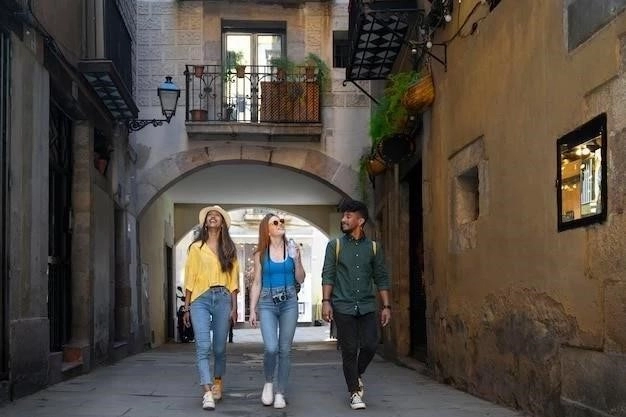
Accommodation Options within and around Intramuros
Whether seeking a historic retreat within the Walled City’s embrace or the convenience of modern accommodations nearby, Intramuros and its surrounding areas offer a range of lodging options to suit every traveler’s preference and budget.
For those desiring an immersive historical experience, several charming boutique hotels and restored ancestral homes within Intramuros provide a glimpse into the city’s colonial past. These accommodations often feature period architecture, antique furnishings, and tranquil courtyards, creating an ambiance reminiscent of a bygone era. Staying within the Walled City offers the advantage of being within walking distance of major attractions, allowing for leisurely explorations and late-night strolls through its illuminated streets.

Just outside the walls of Intramuros, the bustling districts of Ermita and Malate offer a wider selection of hotels, ranging from budget-friendly options to luxurious international chains. These areas provide easy access to Intramuros while offering proximity to a vibrant mix of restaurants, bars, and cultural attractions. Whether seeking historic charm or modern convenience, travelers will find accommodation options that suit their needs and enhance their exploration of Intramuros and its surrounding areas.

Practical Tips for Visiting Intramuros
To ensure a seamless and enriching exploration of Intramuros, consider these practical tips before embarking on your journey through the Walled City’s historical tapestry:
Best Time to Visit: Intramuros welcomes visitors year-round, but the cooler months from November to February offer the most pleasant weather for strolling through its streets and enjoying outdoor activities.
Getting Around: Intramuros is best explored on foot or by bicycle, allowing for a leisurely pace and the flexibility to discover hidden corners. Kalesa rides provide a charming and traditional mode of transport, while taxis and ride-hailing services are readily available outside the Walled City’s gates.
Dress Code: While Intramuros does not enforce a strict dress code, modest attire is recommended, especially when visiting churches and religious sites. Comfortable walking shoes are essential for navigating cobblestone streets.
Respectful Exploration: Intramuros is a place of historical and cultural significance, and visitors are encouraged to treat its sites and residents with respect. Photography is generally permitted, but it’s always courteous to ask permission before photographing individuals or private property.
Preserving the Past for Future Generations
Intramuros stands as a poignant reminder of the importance of preserving the past, not as mere relics confined to history books, but as living, breathing spaces that connect us to our heritage and inspire future generations. The task of safeguarding this historical treasure for posterity requires a collective effort, one that involves not only preserving its physical structures but also ensuring its continued relevance in a rapidly changing world.
The Intramuros Administration, along with various cultural organizations and heritage advocates, plays a pivotal role in this endeavor. Through meticulous restoration projects, they work tirelessly to repair the ravages of time and conflict, ensuring that Intramuros’ architectural treasures continue to stand tall. Beyond bricks and mortar, these efforts extend to preserving intangible cultural heritage, supporting traditional crafts, and promoting cultural events that keep the spirit of Intramuros alive.
As visitors to Intramuros, we too have a role to play in its preservation. By approaching our exploration with respect and appreciation, by supporting local businesses and initiatives that champion heritage conservation, and by sharing our experiences with others, we contribute to ensuring that this historical gem continues to captivate and inspire for generations to come.

